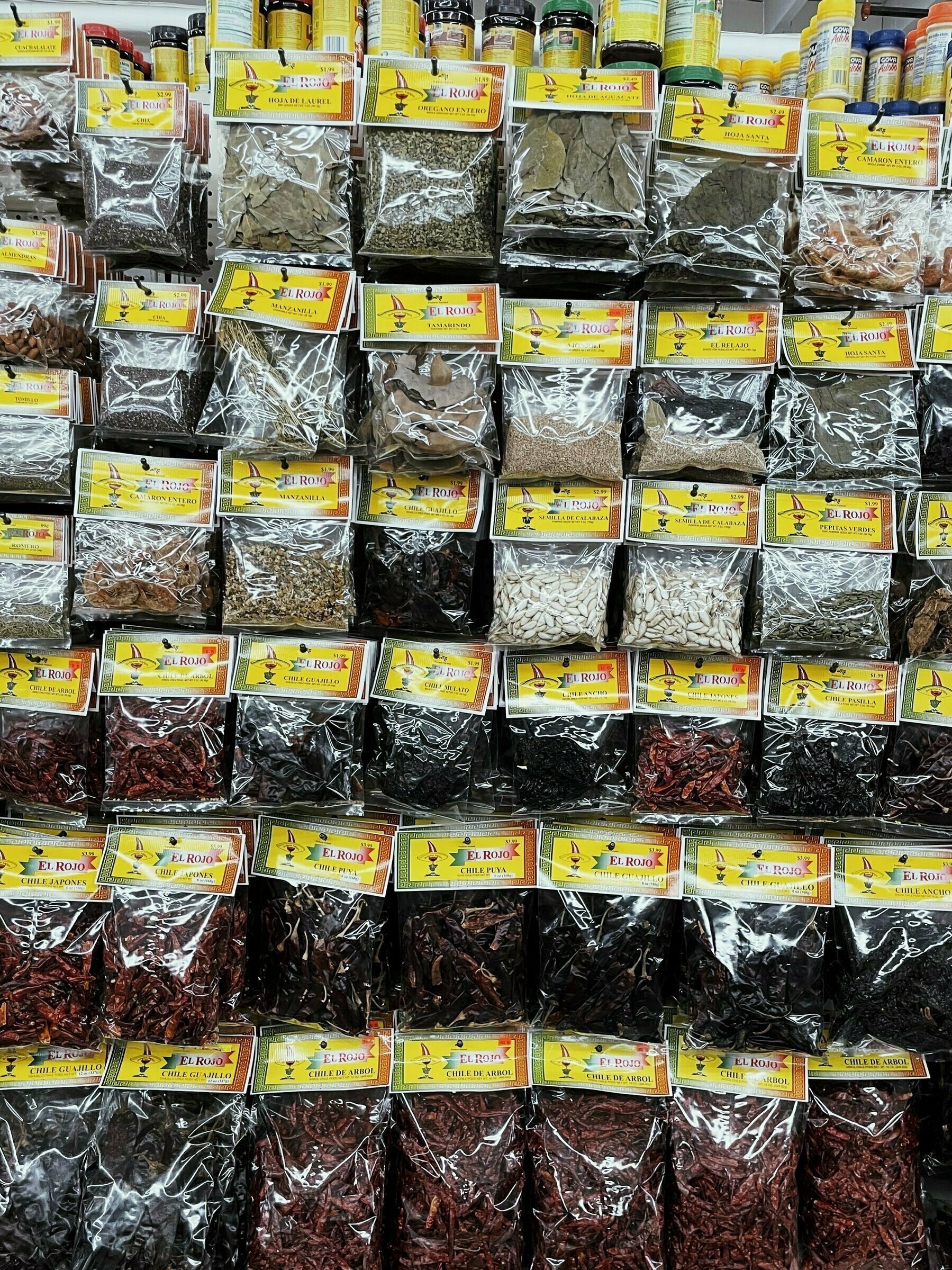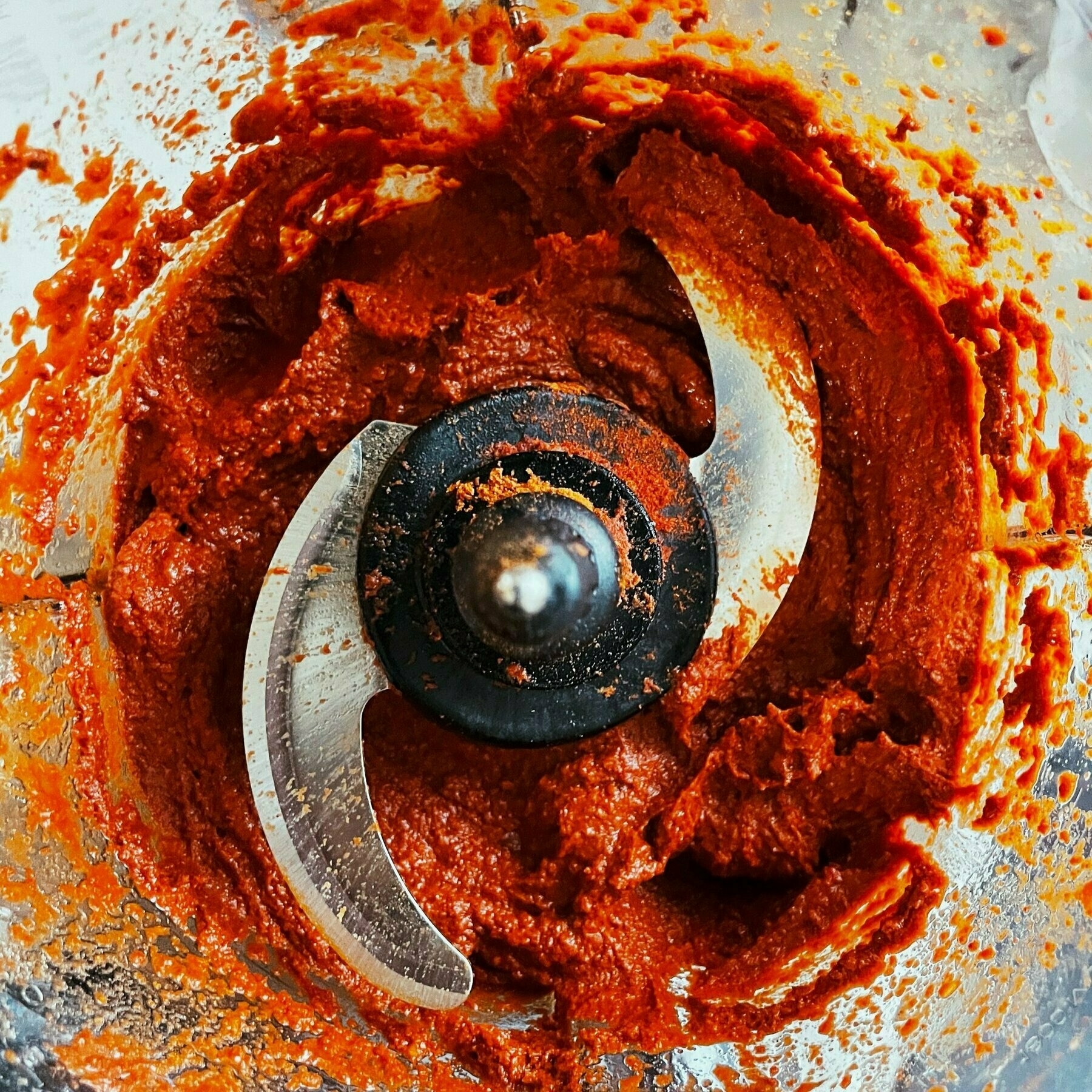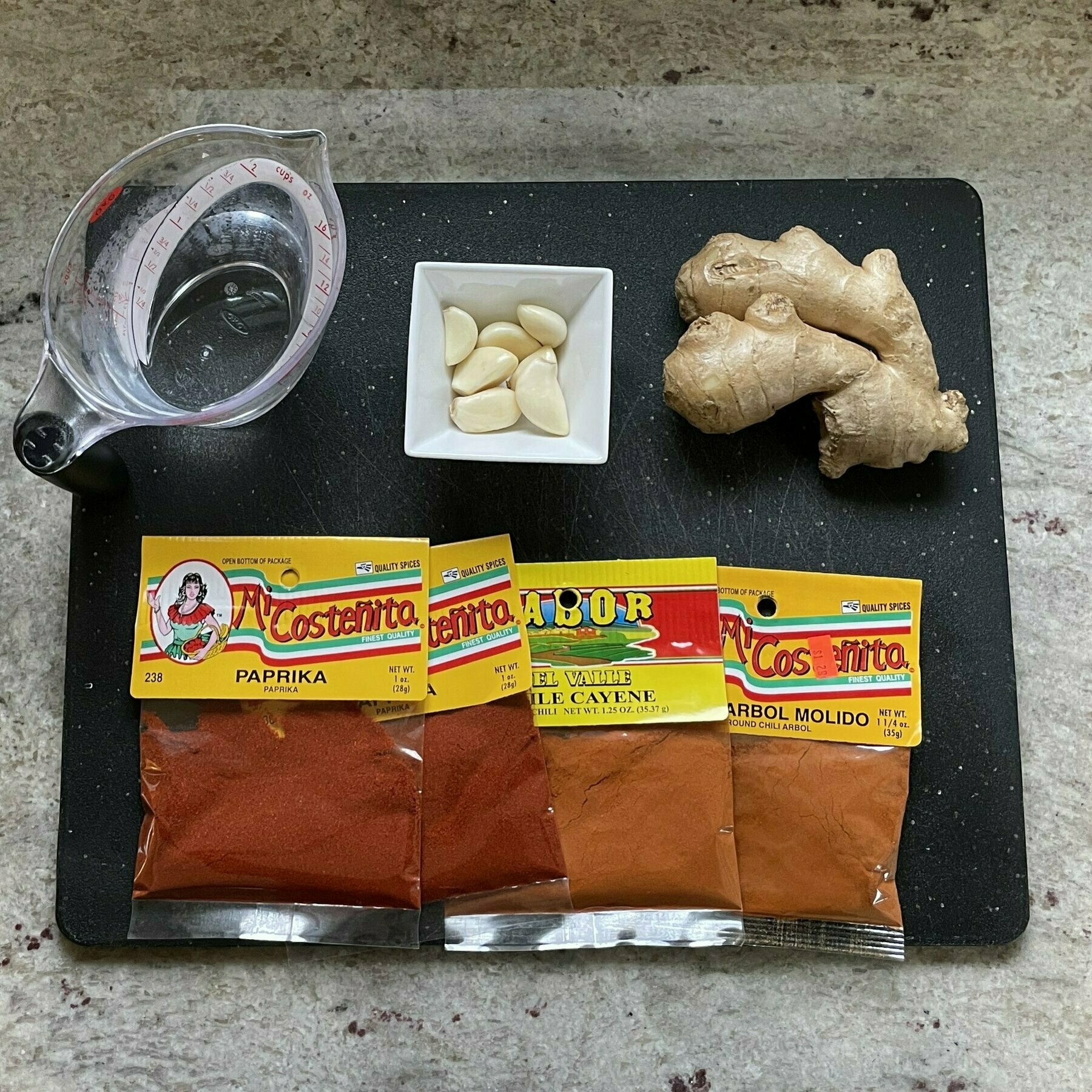This is my first go at making kimchi, the beloved Korean use-everywhere fermented cabbage dish. I like it spicy. Very spicy. And that's what I attempted here without much knowledge or craft experience in the space of fermenting.
Actually, I have zero experience.
So pulling off a great batch of kimchi sounded appealing and challenging -- the selective choices in ingredients, the ability to tweak the recipe to the right spice levels, and of course, the sense of accomplishment. These are all great reasons to try it, or so I told myself six days ago.
Astonishingly, I was able to pull this off.

Getting the Ingredients
This was a fairly straightforward operation, but I was lazy on a number of things.
First things first, I needed to build the "kimchi paste", the base layer. I could have been really disingenuous and bought a bottle of kimchi paste online somewhere, but I wanted to "customize" my own, so I went to the nearby Dragon Star Oriental Foods grocery store to find some powdered chili peppers. Since I am so accustomed to finding things myself online, and because I couldn't actually find anyone who worked at the store, I marauded around the chili and condiments aisles hunting for Korean Gochugaru. I couldn't find it, so I found a few chili packets that looked spicy and I had used in a Bloody Mary mix a few years ago. That's probably fine, I told myself. This is an experiment.

For non-kimchi activities, I also picked up some frozen wontons and reloaded on chili sauce. And a few hot sauces. And also some Japanese spicy salt. Something is wrong with me.
I then picked up plain old cabbage (couldn't find Napa cabbage at this or the other grocery store), amd also green onion, ginger, garlic, and daikon radish.
Yes, I was following a recipe from a Fermenting book.
No, I wasn't weighing anything I was buying.
Yes, I misfired on the amount of ingredients. Yes, you guessed right: I didn't get enough cabbage.
Building the Kimchi
I was excited to use the food blender to make the paste. It a was a nice looking attachment to a blender system we got a while back, but never got around to using. After throwing all the kimchi paste ingredients into the blender, it took all of three seconds to whip it into perfect harmony. So that was short-lived.

I then carefully cut and threw into a large bowl all the other kimchi primary materials, including the ratio-adjusted paste (after realizing my cabbage was about a third of what I needed), and used some gloves to mix and squeeze and mash everything together. This was fun.
And that was basically it.
I put the amalgamation into a half-gallon Balls jar and screwed a fermenting lid on, then put it downstairs next to all the booze, and waited.
Waiting to Taste the Kimchi
Specifically, I waited six days. I didn't touch the jar, but I did pass by it a few times when going downstairs, and it had a light, funky emanating smell.
I checked it a few times for bubbling (which was happening), and for mold (which was not happening).
I was pleased with how it had been progressing.
How the Kimchi Turned Out
On the sixth day, I opened the container, sniffed the rich, soggy, spicy cabbage odor, and snagged a spoon out of the drawer to taste my creation.
It was potent. It was spicy. It was tangy. It was, through and through, a fairly good tasting kimchi. Not correctly made by any means, as I took shortcuts, but I'm quite pleased with a first trial run of making it at home. Would I gather the right amount of ingredients, including the correct Korean chilis next time? Yes. Would I do anything else differently? No.
Would I recommend making at home? Yes. This is far less expensive than buying the stuff I usually do, even though I need to try and dial in the flavor profile. But the canvas for modifying and adjusting ingredients is wide, and I'm already plotting my next version.